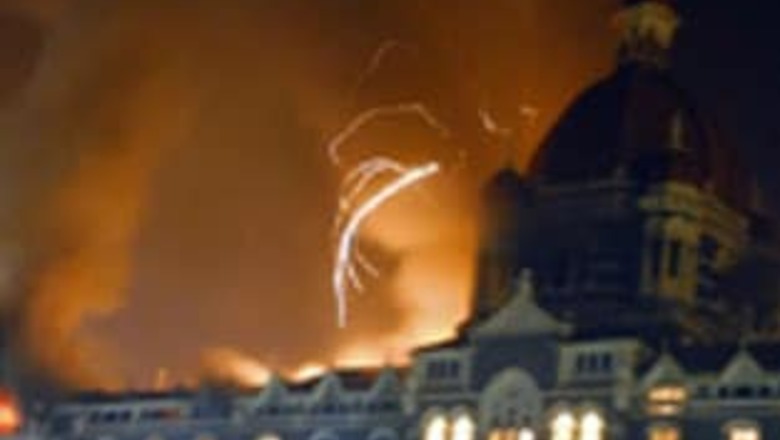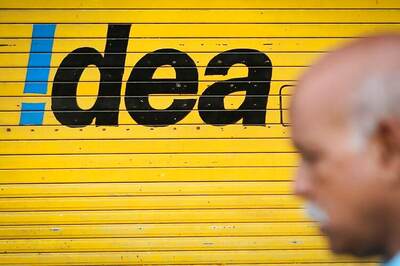
views
Mumbai/Bangalore: Mumbai is no stranger to terror attacks. Its checkered history includes March 12, 1993 when more than 250 people lost their lives, the July 2006 train blasts in which there were 181 official casualties, and more recently, last month’s terror attacks in which official figures state 183 dead. And yet, what is conspicuous by its absence since more than a decade is a simple standard operating procedure in dealing with the media. The manner in which official agencies handled communications with the public and media during the Mumbai attacks exposed a near-complete lack of understanding of crisis communication.
Apart from occasional updates on the body count, there was little information on the status of people targeted by the terrorists.
Security and media experts point to lack of a single coordinating authority as the key failure with regards information dissemination during the crisis.
The city’s local administrative authority, the Brihanmumbai Municipal Corporation, which has a fully operational disaster management cell - recently acknowledged by experts from Harvard University as one of the best - was not used for disseminating information.
Instead, information about different aspects of the unfolding rescue operation was being given out by seven different government agencies including the National Security Guard (NSG), the Indian Navy, the Indian Army and the Maharashtra Police.
Senior Fellow and expert on neighbourhood policy with the Observer Research Group, a New Delhi based independent think-tank, Wilson John, believes that India doesn’t need to look far for examples of effective management. According to Wilson, something along the lines of the National Disaster Management (NDM) committee which was established after the 2004 tsunami is urgently needed to deal with terror. The NDM deals with man-made disasters such as fire, cyber terrorism as well as natural disasters like the tsunami and earthquakes. It has a well-defined law (National Disaster Management Act 2005) which rests all decision making with a single authority and has strict procedures in place, including guidelines on information dissemination and handling the media during emergency situations.
“The lack of an incident management system is apparent, which is surprising because in situations such as Kargil, the media was handled effectively. There were daily briefings. There was a central information authority. The government of India has a Press Information Bureau (PIB) with regional offices including one in Mumbai. The Navy has a director of public information. But no one addressed the media. There should have been a more formal and central briefing for the media. This should be corrected immediately,” says Wilson.
PAGE_BREAK
The Indian Navy held a press conference even while fighting was still raging on within the Taj Hotel. Masked members of the Navy’s commando wing recounted to the media their assessment of the terrorists. The Navy had not coordinated with the other agencies working on the ground.
Maharashtra Medical Education Secretary, Bhushan Gagrani, was in charge of the state’s communication efforts during the attacks. His view was that organisations like the Army, NSG and the Navy only gave out information “related to their own areas of operation, only after the operations were over.”
An official spokesperson on condition of anonymity, speaking about lack of media coordination during 26/11 says, “There should be single point briefing arrangement at the time of crisis. A concerted briefing attempt would have culled speculations in the bud. Had PIB, Mumbai, succeeded in getting single point briefings organised by one authorised person, things would have worked better.”
A Tamil Nadu bureaucrat, J Radhakrishnan, noted for his efficient handling of the tsunami aftermath in 2004, says, “No two disasters can be treated similarly”. However, he points to two key factors that can help official communication efforts during crises—openness and impartiality.
“We set up a media centre within the first few days of the tragedy. We reported on both government and non-government relief efforts from this centre round the clock. There were also daily press briefings at pre-scheduled times which were open to all media,” he says. This not only made it easier for media to access all the updated information from one source but also instilled trust in the media that the government would not hand out “exclusives” on the tragedy to any of them.
In Mumbai, instead of providing regular updates on the number of casualties, the government directed journalists and public to multiple telephone numbers of hospitals and government agencies. Chaos ensued as every available number was called up throughout the duration of the attacks by people seeking updates on the affected.
Gagrani admitted that the focus of his communication efforts was mostly the media, due to which common citizens searching for accurate information about the operation may have had some misgivings.
PAGE_BREAK
Communications following the Mumbai terror attacks were marked by conflicting claims around statistics, specifics of real-time operations and jingoistic chest-beating. Even when desperate officials tried to reassure the public, it backfired.
On day two of the crisis, Maharashtra’s Director General of Police, A N Roy, told the media “the situation at the Taj is under control. There is no hostage-like situation.” His statement would later turn out to be completely incorrect as the fighting would rage on for close to another 48 hours, during which many more hostages died.
Just like there was an urgent need for a central operational command during the Mumbai terror attacks, there was also an urgent need for a media coordinator - not merely for informing and updating the public but also for controlling the media. “No one is questioning media’s commitment to the country at large. But at times such as Operation Tornado, they can compromise safety and security. Media should be part of well-laid out protocol. This should be done in advance by effective administration, not as a reaction,” says Executive Director South Asia Terrorism Portal, Ajai Sahni.
Creating an effective crisis communications infrastructure should be an immediate priority for the government. But such infrastructure—buildings, communication lines, people—cannot be created overnight when a tragedy happens, says Radhakrishnan. Teams need to be built with command structures that allow for clear leadership but also allow for different agencies to “fit in” at various levels. That will allow for more information to reach the public in a coordinated manner.
Popular communication mediums like TV, radio or internet should be actively targeted to get information out to the public, instead of being viewed as irritants. Special attention needs to be paid to new mediums like mobile phones that allow near instantaneous communications with millions of citizens.
“If we mismanage information during a crisis, it only aggravates the agony of the affected,” says Radhakrishnan.
Rohin Dharmakumar is an assistant editor and Aliefya Vahanvaty is chief copy editor with the business magazine to be launched by Network18 in alliance with Forbes, USA.



















Comments
0 comment